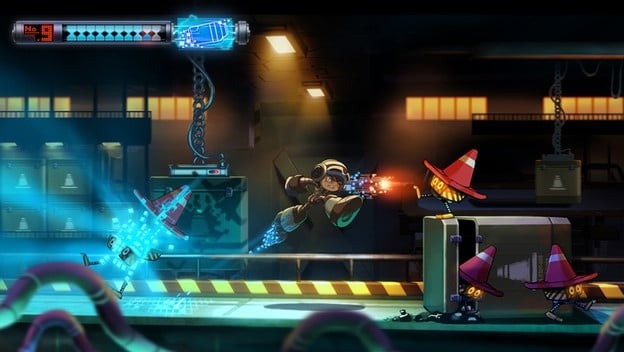When developing Mighty No. 9 , the spiritual successor to Mega Man , Keiji Inafune ran into a problem while attempting to differentiate the game from older NES and SNES platformers. Despite the fact that Mighty No. 9 is designed to be a 2D sidescroller, Inafune wants to avoid pitfalls that could make his game seem outdated. His solution? Speed up the gameplay.
“If you look at some of the older games from the 1980s, the original 8-bit and 16-bit games, they moved a bit slower,” said Inafune to Polygon. “With modern games, everything is sped up quite a bit, whether it’s frequent save points or the actual game speed itself. So we wanted to focus on making the actual core gameplay loops a lot faster.”
Inafune is keen on learning from modern titles, constantly comparing them to the design of older games. For instance, Inafune mentioned how players needed to pause and examine an enemy’s pattern in Mega Man to progress. According to Inafune, that approach to game design doesn’t always work for modern titles.
This is where Mighty No. 9’s dash-absorption mechanic comes into play, as it introduces a risk and reward factor to players. “So for every enemy, you’re asking yourself: Do I dash? Do I shoot? That timing, that rock, paper, scissors element is always there,” Inafune said.
Interesting to note that even though he wants to focus on speeding up Mighty No. 9’s gameplay, he still manages to describe the same “rock, paper, scissors element” that made Mega Man so memorable.
[ Polygon ]
